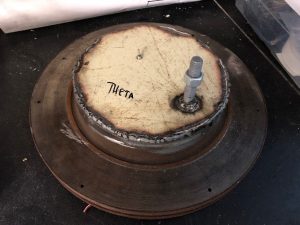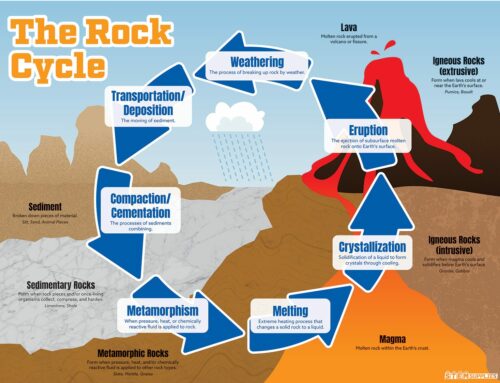What’s unique about my STEM program is the ability for students to fabricate self-designed solutions to unsolved problems from the real world. My favorite annual assignment is the tornado chaser project.
For this student-built project, students are asked “How can we increase lead time in tornadic forecasting?” They must build probes that can take a pounding from a large supercell, and learn how to forecast severe weather.
From the first-year probe, a dishwasher bristling with Vernier probeware, every class has learned something new to push development further. This year we continue the tradition from last year’s class by constructing the probes from wheel rotors. Wheel rotors are the part of an automotive wheel assembly that receives pressure from the brake pads to stop the car. You may wonder: Why wheel rotors?
Optimizing Design
Every generation of probe has seen improvements in design and materials. After the dishwasher, students created wooden probes that were more compact, about the size of a suitcase. When rain hit these, wood expanded and warped, causing the casing to leak. Next year students coated their wooden probes with metal. While this improved protection from water, students realized they were still too large and too light. This discovery was made when two probes were deployed with instrumentation and cameras, only to be consumed by the storm, never to be found.
When last year’s students took up the challenge, they knew probes needed to be smaller with a lower profile and heavier! While working at home one day, I noticed my neighbor replacing the brakes and rotors on his truck and throwing the old parts in the garbage. I asked if my students could use them for an experiment and he graciously handed them over. My students were ecstatic when I revealed my findings! Simply by using the rotors, they more than tripled the weight while reducing the wind profile enormously.
Materials and Fabrication
For fabrication, students cut 14-gauge sheet metal to cover the holes for the lug bolts on top of the rotor. These were welded in place along with a single bolt to mount an action camera. On the bottom, students cut another circular plate to enclose the casing and house the instrumentation. They did this using an Arduino-type microcontroller and probes with a battery and switch. Holes were drilled through the lower plate directly into the rotor and were tapped so the plate could be attached with screws. The gaps in the rotor (used for cooling while the car is braking) was filled with cement to protect from water and add weight. Then the whole unit was painted a bright orange so it was easy to find.


Testing
First tests of the probe happened last year in Oklahoma where the probe was deployed and recovered safely after being hit by quarter-sized hail. Collected data was uploaded and students celebrated their first successful deployment and retrieval of a probe. This year, students have once again built probes using wheel rotors, this time donated to us by Brake Check, a regional brake and alignment company. The sizes they gave us were varied and students saw the potential to include more hardware within the casing.
Overall, students have weathered challenges within the program and used critical- and creative-thinking skills to solve a difficult problem. When looking for materials for your students, be sure to think about reusing old devices and equipment. A student-built project not only shows that anything can be constructed when you put your mind to it, but you also become more sustainable. So get out there and create a unique student-built project using materials others would discard!







Leave A Comment